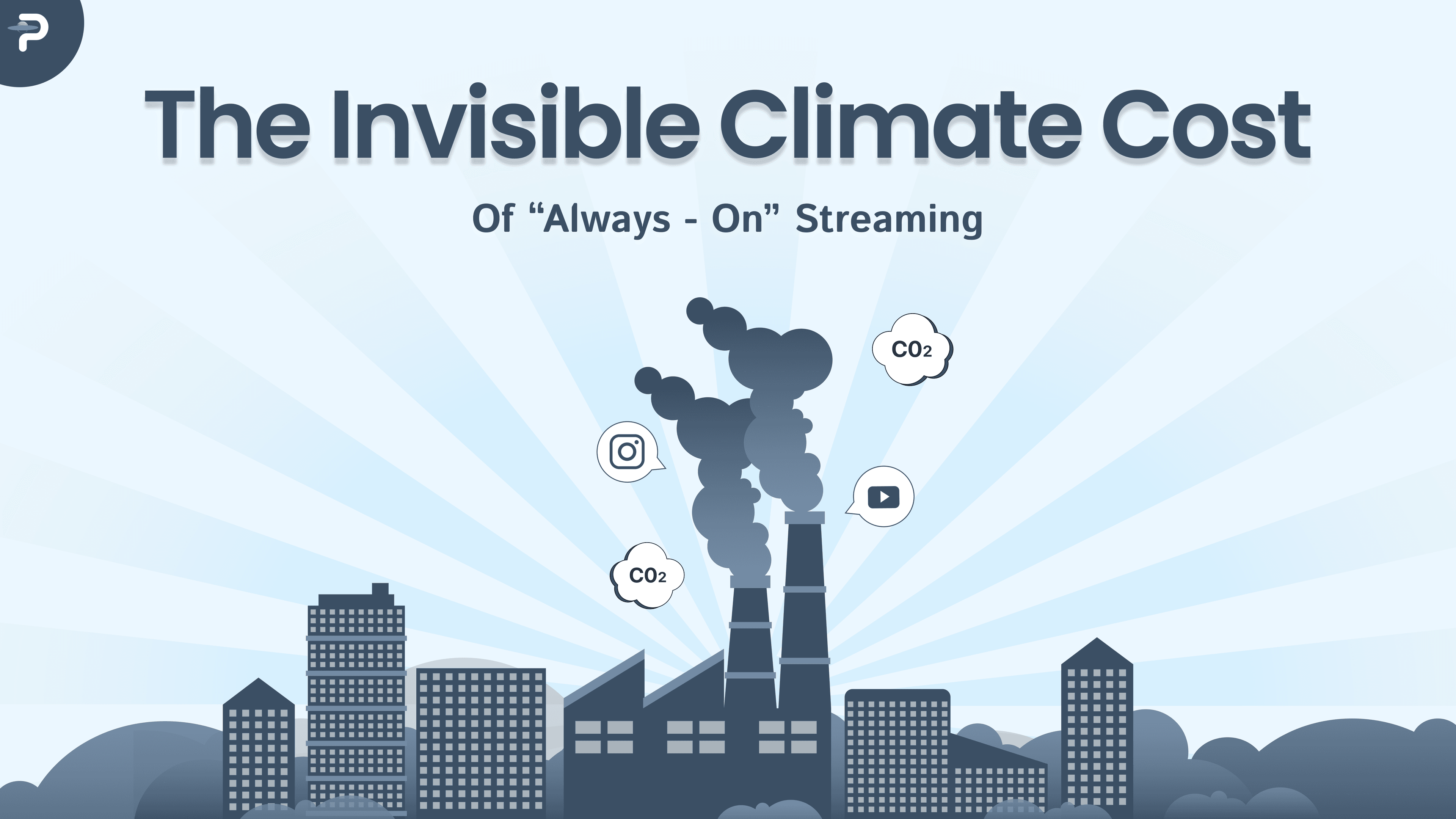Streaming feels effortless. There’s no CD, no packaging, no fuel-burning truck bringing entertainment to your door. Just pixels and sound waves. So clean, right?
Well, not really.
Behind every movie night or music marathon, there’s an invisible machine running, one that quietly burns through energy while we binge another season.
Here’s what actually goes on when you hit that play button.
Your show doesn’t come from “the internet” like some magical cloud. It travels through massive data centres, football-field-sized buildings packed with servers that hum nonstop. They store every episode, every clip, every thumbnail.
Those machines run 24 hours a day, using enormous amounts of electricity to stay cool and responsive. Even when you sleep, they don’t.
And that electricity? In many parts of the world, it still comes from burning coal or gas.
One hour of HD streaming may release about 100 grams of CO₂, not much on its own, but multiply that by billions of streams across the globe every single day, and suddenly it’s a whole lot of invisible smoke rising into the air.
According to the International Energy Agency, data centres use more electricity than entire nations. Think about that — the world’s “internet warehouses” collectively consume as much power as France.
And streaming keeps pushing that number higher. High-definition, 4K, even 8K videos require more bandwidth, more cooling, and more servers. The smoother our entertainment gets, the harder those machines work behind the scenes.
Even when you hit pause, the system doesn’t. Every second of buffering, every cached thumbnail, still draws power.
Now, it’s not just “them.” It’s us too.
That glowing TV, the smart speaker, your router blinking quietly in the corner, they’re all part of the same ecosystem. Most of them stay powered on all the time. Even when you’re not watching anything, your Wi-Fi router keeps humming, pulling power 24/7.
Then there’s the never-ending upgrade cycle. Bigger screens, sharper displays, smarter devices. Every new gadget means more factories, more shipping, more e-waste later. We don’t see it, but it’s there, baked into every new purchase.
The reason digital feels guilt-free is because it’s invisible. There’s no smoke coming out of your laptop, no exhaust pipe on your phone.
But the energy trail is real. When Stranger Things 4 dropped, analysts estimated that the total global viewing could’ve emitted over 400,000 tonnes of CO₂. That’s roughly the same as flying 80,000 people around the world.
And that’s just one show.
Every playlist on Spotify, every viral TikTok, every live match we stream — it all adds up. The world’s love for streaming has quietly become one of the fastest-growing sources of digital emissions.
The good news? The people running these platforms know it.
Netflix has pledged to reach net-zero emissions by 2030. Google claims its data centres now run on a growing mix of renewable energy. Amazon and Microsoft are building solar and wind farms to power their cloud services.
But the reality is trickier. Renewable energy doesn’t flow evenly 24/7, the sun doesn’t always shine, and the wind doesn’t always blow. So, most data centres still rely on local power grids that use fossil fuels.
Some companies are trying creative fixes, liquid cooling, AI-controlled efficiency, even underwater server farms. Others rely on carbon offsets, but that’s more like balancing the scales after the damage is done.
Here’s the honest truth, we don’t need to give up streaming. We just need to be smarter about it.
A few simple tweaks can quietly make a big difference:
- Lower your video quality when it doesn’t matter. Watching on a phone? 720p looks just fine.
- Turn off autoplay. Do you really need five episodes in a row?
- Download once, watch offline. Saves both data and energy.
- Use smaller devices. Streaming on your phone or tablet uses far less power than your 65-inch TV.
- Unplug your Wi-Fi router when you’re out for a weekend.
No single change fixes the problem, but together, they help the system breathe.
Streaming changed how we connect with stories. It made culture borderless. A teenager in India can discover a band from Iceland or a show from Spain with a single tap. That’s powerful, and worth preserving.
But as our digital world expands, so does its footprint. The challenge now isn’t to stop streaming, but to stream consciously.
Maybe the most radical thing we can do is simple: hit pause. Not just on the show, but on our constant need for “always-on” everything.
Because sustainability isn’t about guilt, it’s about awareness. Once you see the invisible cost, you start choosing differently.
And maybe, just maybe, the next time you press play, you’ll know exactly what it took to bring that story to your screen.




